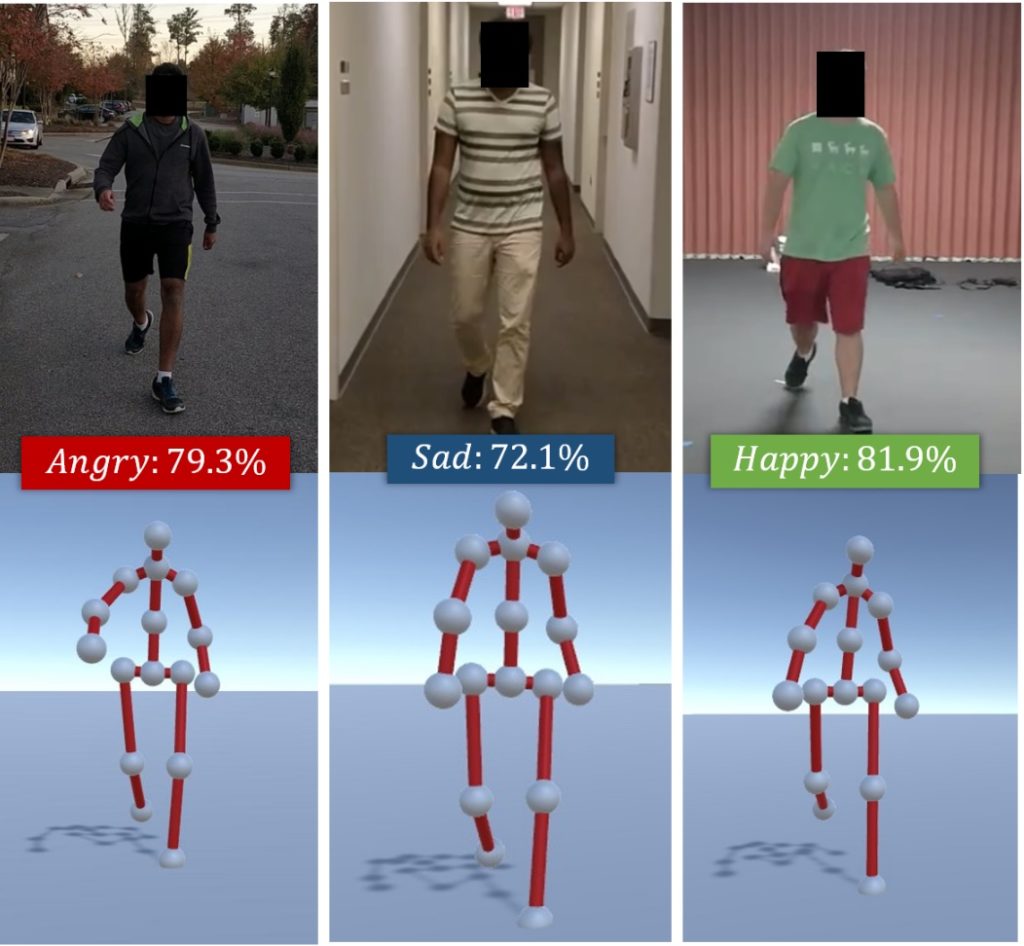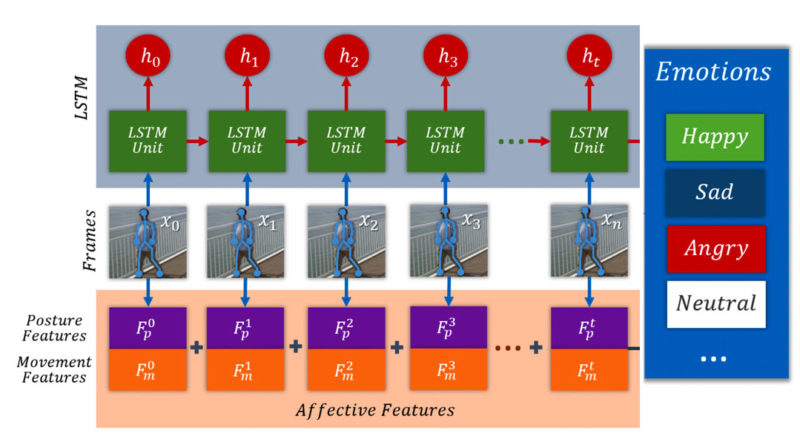Gait Recognition AI Can Identify Mood By How You Walk
Whether used in surveillance to stop criminals before they act or in retail to detect unhappy customers, some scientists are attempting to take facial recognition beyond simple identification and use it to help tell if a person is happy or angry. Some are even looking beyond the face and using AI to determine a person’s mood by their movements.
Scientists at UNC-Chapel Hill and the University of Maryland have created software that can figure out emotions just by the way a person is walking. The AI takes a video of someone walking and translates it into a 3D model that consists of 16 joints. The AI looks at the joint positions and movements it to help extract the ‘gait’. Gait basically means a person’s “way of walking”.
Algorithm Can Detect Happiness, Sadness, and Anger
The algorithm then uses posture and movement clues to match up the gait to a particular emotion based on the data it was trained on. The AI can guess four different emotions – happy, sad, angry and neutral. During testing, the software had an accuracy rate of 80%.
“The way a person walks, or their gait, has been proven to aid in the perception of that person’s emotion. The ability for body joints to express emotions has been studied in two pathways: posture and movement. Studies involving signals from posture and movement determined that both are used in the perception of emotion,” said the research paper.
The algorithm was trained on a dataset called “EWalk (Emotion Walk)” which consisted of videos of people walking indoors and outdoors with a variety of gaits and labeled emotions. According to researchers, this dataset could also be used to develop and train new emotion recognition tools designed to analyze movement, posture, and gait.

Gait Recognition Beyond Surveillance
Gait recognition technology could go beyond surveillance and be used to help identify people who may be suffering from undiagnosed physical or mental conditions. It could also help develop robots with better perception and more human-like interaction skills.
“There are many applications for this research, ranging from better human perception for robots and autonomous vehicles to improved surveillance to creating more engaging experiences in augmented and virtual reality,” said Aniket Bera, a Research Professor at UNC.
Gait Recognition isn’t new. Scientists in the US, Japan, and Great Britain have been researching the tech for over a decade. China recently has begun using it for surveillance activities in a few of its major cities.
Check out our articles on using facial recognition to find lost dogs and robots parking cars in Beijing.

